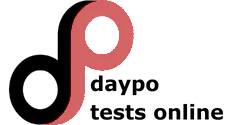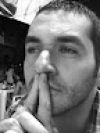TEST BORRADO, QUIZÁS LE INTERESE:
CPLFDELI UNIT 1 - 2
|
|
|---|
REALIZAR TEST
|
Título del Test:
CPLFDELI UNIT 1 - 2 Descripción: CPLFDELI UNIT 1 - 2 Autor:
Fecha de Creación: 11/06/2023 Categoría: Idiomas Número Preguntas: 40 |
COMPARTE EL TEST



COMENTAR
No hay ningún comentario sobre este test.
Temario:
|
1. What is the main purpose of the Present Simple? a) Temporary actions b) Actions in progress c) Permanent situations, repeated actions, and general truths d) Actions completed in the past. What is the correct form of the verb "to be" in the third person singular of the Present Simple? a) am b) are c) is d) be. Which of the following is true about the Present Continuous? a) It is formed with the present simple form of "to be" and the -ing form of the verb b) It is used for habitual actions c) It is used for actions completed in the past d) It is not used with verbs of perception. Which of the following is an example of a verb that changes meaning between Present Simple and Present Continuous? a) run b) jump c) think d) swim. Which of the following is a common use of the Present Perfect? a) Actions completed in a specific past tense b) Actions in progress in the present c) Actions completed in the past in relation to the present d) Habitual actions in the past in the present. Which of the following is a time expression commonly used with the Past Simple? a) last week b) for c) since d) at the moment. What is the correct form of the verb "to have" in the third person singular of the Present Simple? a) have b) has c) had d) having. Which of the following is a spelling rule for adding -ing to a verb in the Present Continuous? a) Change -y final to -ie b) Change -ie to -y c) Remove -y final d) Add -e to the end. What is the correct structure for forming questions and negations in the Past Simple of other verbs (not "to be")? a) Auxiliary did/did not (or didn't) + base form of the verb b) Auxiliary was/were + base form of the verb c) Auxiliary did/did not (or didn't) + past form of the verb d) Auxiliary was/were + past form of the verb. Which of the following is a common use of Past Continuous? a) Describing something in progress at a specific time in the past b) Describing actions completed in the past c) Describing habitual actions in the past d) Describing actions in progress in the present. What is the primary purpose of the Past Perfect tense? a) To describe an event or action that occurred in the past before another event or action in the past b) To describe an event or action that is happening now c) To describe an event or action that will happen in the future d) To describe an event or action that is happening at the moment. How is the Past Perfect tense formed? a) had + present participle b) had + past participle c) was/were + past participle d) was/were + present participle. Which tense is used to emphasize extended or repeated events/actions before a specific point in the past? a) Past Perfect b) Past Continuous c) Past Perfect Continuous d) Present Perfect Continuous. Which future tense form is used for unplanned future events and spontaneous decisions? a) Going to b) Present Simple c) Present Continuous d) Will. Which future tense form is used for planned future events and predictions based on present or past evidence? a) Going to b) Present Simple c) Present Continuous d) Will. Which future tense form is used to express future arrangements with a specified time reference? a) Present Simple b) Present Continuous c) Going to d) Will. Which future tense form is used to express future events that are part of a schedule or timetable? a) Present Simple b) Present Continuous c) Going to d) Will. Which of the following is a characteristic of pure modal verbs? a) They are inflected in the third person b) They are followed by the bare infinitive c) They are used on their own d) They are followed by the full infinitive with "to". Which of the following is a semi-modal verb? a) ought to b) can c) might d) must. Which modal verb can be used on its own to refer to past time? a) can b) could c) might d) must. What is the primary purpose of using the passive voice in a sentence? a) To focus on the doer of the action b) To focus on new or important information c) To the action itself d) To make the sentence shorter. How is the passive voice formed? a) A form of "to be" + present participle b) A form of "to be" + past participle c) A form of "to have" + past participle d) A form of "to have" + present participle. In passive constructions, what happens to the subject and object? a) They remain in the same position b) The subject becomes the agent and switches positions with the object c) The object becomes the agent and switches positions with the subject d) Both the subject and object are removed from the sentence. What is the difference between direct speech and reported speech? a) Direct speech is the exact words spoken, while reported speech relays what was said with changes to the original words b) Direct speech relays what was said with changes to the original words, while reported speech is the exact words spoken c) Direct speech is used in formal writing, while reported speech is used in informal writing d) Direct speech is used in informal writing, while reported speech is used in formal writing. Which of the following is a basic reporting verb? a) accuse b) suggest c) say d) warn. Which reporting verb is used when the person being spoken to is unimportant or already known? a) tell b) say c) explain d) suggest. Which reporting verb is used to draw attention to the person being addressed? a) say b) tell c) explain d) suggest. What type of verbs convey the perceived attitude of the original speaker? a) Attitude and interpretation verbs b) Non-attitude verbs c) Basic reporting verbs d) Interpretation reporting verbs. Which of the following is NOT a transformation rule when converting direct speech to indirect speech? a) Changes in tenses b) Changes in auxiliary verbs c) Changes in modal verbs d) Changes in the subject of the sentence. In reported speech, which verb form does not need to change? a) Verbs in the Past Perfect b) Verbs in the Present Perfect c) Verbs in the Past Simple d) Verbs in the Simple. What are the two clauses in a conditional sentence? a) A main (conditional) clause and a subordinate (if) clause b) A main (conditional) clause and a subordinate (unless) clause c) A main (conditional) clause and a subordinate (provided) clause d) A main (conditional) clause and a subordinate (supposing) clause. What is the structure of the zero conditional? a) if + present tense, present tense b) if + past tense, would + bare infinitive c) if + past perfect, would + have + past participle d) if + present tense, will + bare infinitive. Which conditional is used to express certain and possible conditions in the immediate future? a) Zero conditional b) First conditional c) Second conditional d) Third conditional. What is the structure of the second conditional? a) if + present tense, present tense b) if + past tense, would + bare infinitive c) if + past perfect, would + have + past participle d) if + present tense, will + bare infinitive. Which conditional is used to speculate about past events or actions that cannot be changed? a) Zero conditional b) First conditional c) Second conditional d) Third conditional. What is the structure of the third conditional? a) if + present tense, present tense b) if + past tense, would + bare infinitive c) if + past perfect, would + have + past participle d) if + present tense, will + bare infinitive. In which conditional can modals such as "could" and "might" be used? a) Zero conditional b) First conditional c) Second conditional d) Third conditional. What is the purpose of mixed conditionals? a) To express actions or events in the past with present consequences or past events resulting from timeless or present facts b) To express general laws, truths, and constant conditions c) To express certain and possible conditions in the immediate future d) To speculate about past events or actions that cannot be changed. Which of the following is NOT a conjunction that can be used in conditional sentences? a) supposing b) as long as c) provided d) therefore. In which conditional is "if only" and "I wish" often taught? a) Zero conditional b) First conditional c) Second conditional d) Third conditional. |
Denunciar Test




